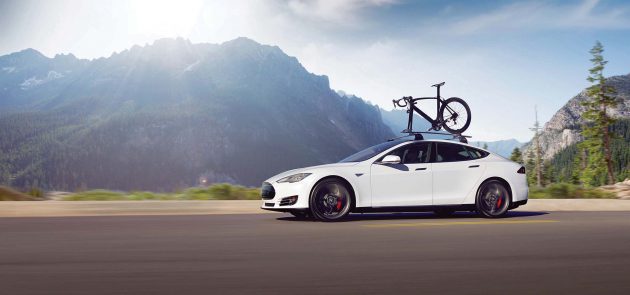
Electric vehicle subsidies: MEI says they’re expensive and ineffective
By PLANT Staff
Business Operations Industry Sustainability Automotive Government Manufacturing Transportation Electric Vehicles EVs government subsidies manufacturing subsidies teslaSubsidizing EV costs up to 29 times the carbon market price per tonne of GHGs eliminated.

Tesla’s Model S luxury sedan qualifies for a rebate of up to $14,000 in Ontario. PHOTO: TESLA
“It’s just a waste,” says Germain Belzile, a senior associate researcher at the MEI, an independent researcher in Montreal. “Not only do these programs cost taxpayers a fortune, they also have little effect on GHG emissions.”
If the Quebec government were to achieve its ambitious goal of having one million electric vehicles on the province’s roads by 2030 (there are currently fewer than 6,000), doing so would only avoid 3.6% of current emissions levels.
Same thing in Ontario, where aiming for the same proportional target would eliminate just 2.4% of emissions.
Quebec provides a subsidy of $8,000 for the purchase of a new electric or rechargeable hybrid vehicle, and Ontario provides up to $14,000.
These subsidies cost taxpayers $523 per tonne of GHGs not emitted in Ontario, and $288 per tonne in Quebec.
In Ontario, adding to the subsidy to purchase a new electric or rechargeable hybrid vehicle is a 50% rebate on the purchase and installation of a charging station for the home (valued at about $750). The plan also includes investments of $80 million to deploy public charging stations across the province.
Quebec has put similar measures in place. Added to its purchasing subsidy is a rebate of up to $600 for a home charging station. Subsidies for the installation of public and corporate charging stations are also planned.
Cheaper options
The province has announced a quota system for 2018 that imposes targets on manufacturers for sales of zero-emission vehicles, but those who are over can buy credits from others who have surpluses.
Those who do not meet the government’s targets will have to pay a fine.
In comparison, the same goal of reducing GHGs will cost around $18 through the existing carbon market, which groups together California, Quebec, and soon Ontario. And it will cost between $10 and $50 per tonne of emissions avoided with the federal government’s impending carbon tax.
“Between the different incentive measures that produce the same results, the most expensive option should never be favoured,” says Germain Belzile. “Subsidizing the purchase of electric vehicles represents without a doubt the worst option among current solutions.”
By subsidizing the purchase of electric vehicles, the Ontario government will end up spending 29 times the carbon market price for each tonne of GHGs eliminated, and 52 times the rate of the upcoming federal tax when it comes into effect next year. For Quebec, the figures are 16 and 29 times.
“The real costs are probably even higher, since half of the buyers vehicles would make their purchases even without the subsidy,” says Mark Milke, independent policy analyst and co-author of the report.
“Those subsidies are a pure loss, with no resulting reduction in GHGs.”
